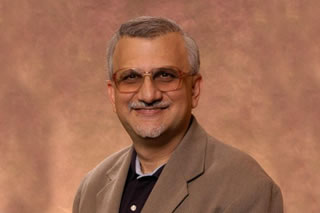News Archive
Faculty Spotlight: Murad Antia Sees the Economic Future, Explains Where it is Headed
By Keith Morelli

TAMPA (August 8, 2019) -- Murad Antia knows where to find answers to troubling questions about the nation’s economy and where it’s going. In 2011, during the dismal depths of the recession, he wrote an op-ed piece stating what few financial prognosticators were willing to say: that things were about to change for the better.
Antia, an instructor in the Muma College of Business’ Finance Department, was among the few who predicted that the unemployment rate would decline faster than forecasted, thereby boosting the sagging economy. The reason: There was a huge wave of seniors about to retire. At the time, the economic outlook was dismal. The unemployment rate was at 9 percent. Nearly one in every 10 Americans was out of work. Growth was decelerating and many were predicting a lengthy recession.
“The baby boomers, at the center of so many other trends – both good and bad – throughout their lives, were, once again, the reason,” Antia said. “They turned out to be the cause of a job boom simply by retiring, aging and requiring care and maintenance.”
Antia calculated the "dependency ratio” then. And the same calculations now, indicate, he believes, the economy is likely to continue to be rosy for a decade or more.
That ratio – a measure of the number of dependents each worker must support – had been declining for more than a decade, he said. But it started to rise around 2012 as a huge wave of baby boomers began to retire. Furthermore, the dependency of each retiree (over 65) is three times that of a child (under 20) because seniors consume three times more in goods and services than children, he said. So, even though Americans are having fewer children, more resources will be required to support the growing population of retirees.
“About 10,000 boomers are turning 65 every day,” Antia said. “As they retire and age, they will create far more job openings than just the ones they leave. They may require financial counselors or health care professionals; even people to mow their lawns and paint their houses. They may want to pay for someone to drive them around and shop for them.”
Data shows that the number of retirees per worker will increase from 25 per 100 workers currently to 31 per 100 workers by 2025, and to 35 per 100 by 2030.
“These increases are huge, and the adjusted dependency ratio will be off the charts relative to the 1980s and 1990s because retirees consume three times as much as a child in goods and services,” Antia said.
So, what does all this portend for the future?
“The economy will continue to be strong, thanks more to the baby boomers aging than the implementation of any economic policies, tax plans or tariffs,” he said. “An aging populace simply requires more assistance in their lives, creating more jobs that range from low-wage earners, mostly, to high-end professionals, occasionally.”
Analysts estimate that an additional 4 million workers will be needed each year by 2030 if the dependency ratios of 2030-2050 are to match the dependency ratios of 1980-2000, Antia said. And this number is well over and above the estimated number of young Americans and immigrants entering our labor force. Translation: more jobs than workers.
That is of course good news.
But the outlook is not all optimistic. Some dark clouds loom in the distance.
For example, one reason for the strong employment numbers we now enjoy is the stimulus provided by the recent tax cuts and spending increases, Antia said. The downside of the stimulus is that it will drastically increase the deficit from $585 billion in 2016 to over a trillion dollars per year by 2020.
Another example, he said, “is a booming economy really lies in well-paying jobs in the manufacturing sector and, though there has been some job creation in that sector, we have yet to see the millions of high-paying manufacturing jobs that were projected to return to the United States after the tariffs were imposed on imported goods from other countries.
“The rationale behind introducing the tariffs was to reduce the trade deficit with other countries, but that has not been the case,” Antia said. “Data shows the deficit is increasing and with no immediate end in sight. Also, the tariffs have the same effect of a tax increase which is slowing economic growth.”
Finally, he said, the removal of some regulations in the energy sector and the environment is especially worrisome because, according to the scientific community, climate change presents a clear and present danger to the United States and the world.
“Easing regulations may have boosted short-term economic growth and employment,” he said, “but the boost may be short-lived, as the price we and future generations will have to pay will be very costly.”